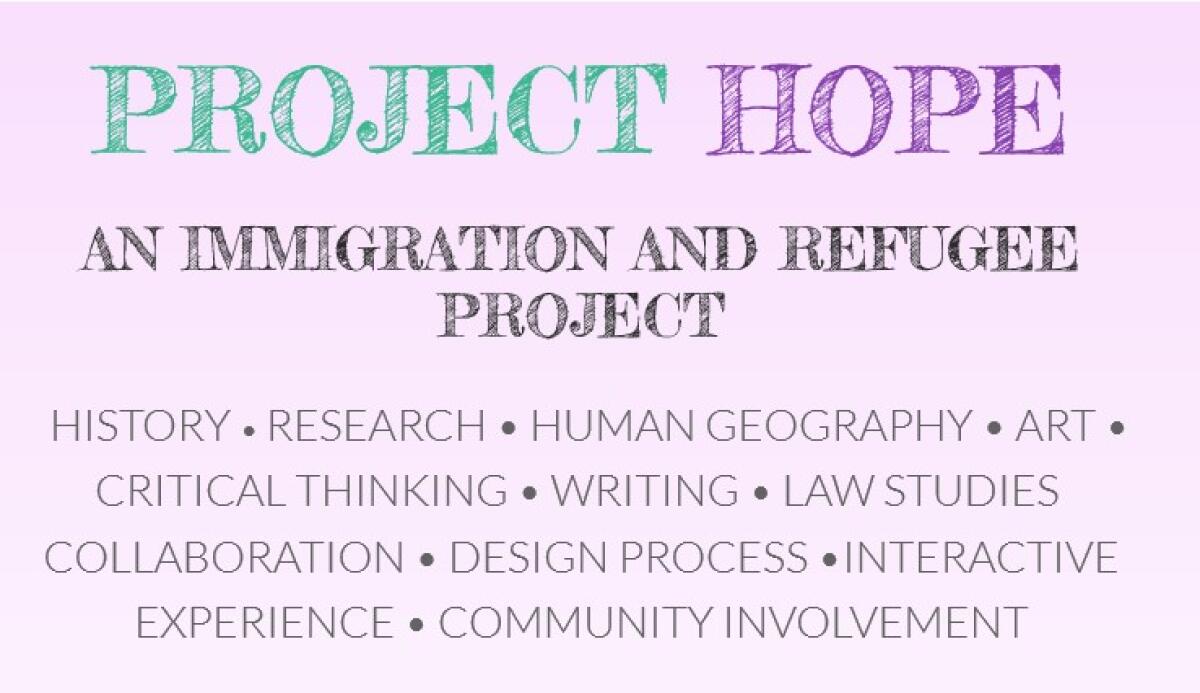L.A. Times Educational Subscriptions Aid Middle Schoolers in Project on Immigration

- Share via
This year, seventh graders at Charter School of Morgan Hill near San Jose tapped into their Los Angeles Times educational subscriptions to help complete an immigration research project.
Humanities teacher Teague Tubach came up with the idea for the assignment, dubbed “Project Hope,” after discovering that more than 40 percent of his students had parents who came to the United States as immigrants or refugees. The students were given access to online Times subscriptions, which they used to conduct research into ongoing immigration issues that interested them.
“Our humanities class research is guided by a driving question that permeates all that we do: How can we develop the knowledge, skills, courage, empathy and wisdom to understand and improve the human condition?” said Tubach.
To complete the project, students were given hand-picked articles from The Times, but they were also encouraged to use their complimentary subscriptions to conduct additional research into subtopics of interest, according to Tubach. While several students read Enrique’s Journey, a six-part series penned in 2014 about a teen who traveled from Honduras to the U.S. in search of his mother, Tubach said the most popular topic was family separation. To research that issue, students found a treasure trove of content within The Times, including articles such as Family separation returns under cover of the coronavirus by immigration reporter Molly O’Toole, and U.S. is separating immigrant parents and children to discourage others, activists say and “La Gran Madre” by Houston bureau chief Molly Hennessey-Fiske.
Tubach noted that the project was “deeply personal” for many students. “Most learned more about their family history and shared those stories in creative ways,” he said. For instance, one student was able to link her great grandmother’s immigration from Fukuoka, Japan, (through Angel Island) and subsequent internment (Poston Internment Camp, Arizona), to the recent rise in discrimination and hate crimes against Asian Americans.
Tubach said he believes this was the first time many of the middle schoolers had read The Times. “For almost all students, The Times served as their introduction to serious journalism and the accompanying critical discourse,” he said. “I think all of them appreciated and benefited from the lack of sugar-coating about immigration issues.”
As Tubach highlighted the differences between textbook-style expository writing with journalism, “I saw sparks of curiosity and wonder,” he said. “It is my hope that those sparks will develop as they grow and mature in their teen years and beyond.”
Tubach said he plans to continue to rely on The Times as a resource for students to learn about other contemporary issues. “This type of research, reading and discourse is an important step in understanding the human condition,” he said. “Middle school students are poised to look beyond their own existence, and The Times is a valuable resource toward that end.”
View the Project Hope website to see the student’s projects.



